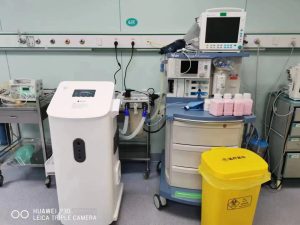Anesthesia machines play a critical role in medical procedures, ensuring patient comfort and successful surgeries. However, the risk of cross-contamination and the potential spread of pathogens through these machines cannot be ignored.
Cross-Contamination Risks and the Importance of Infection Prevention:
Anesthesia machines, being in direct contact with patients during medical procedures, can serve as a potential source of cross-contamination. Various factors, such as respiratory secretions, blood, and other bodily fluids, can harbor pathogens and contribute to the transmission of infections. It is crucial to prioritize infection prevention measures to protect both patients and healthcare providers.
Purpose and Methods of Anesthesia Machine Disinfection:
The primary purpose of anesthesia machine disinfection is to eliminate or reduce the presence of microorganisms that may cause infections. Proper disinfection methods should be employed, taking into account the materials used in the machine and the compatibility of disinfectants. Commonly used disinfection methods include manual cleaning, high-level disinfection, and sterilization. Healthcare facilities should establish clear protocols and procedures to ensure effective disinfection.

The anesthesia machine is being disinfected
Disinfection Frequency and Standards:
The frequency of anesthesia machine disinfection should be determined based on factors such as patient population, machine usage, and infection control guidelines. Generally, machines used on different patients should undergo disinfection between each use. Additionally, routine maintenance and inspections are necessary to ensure the machines are functioning properly and meet the required standards. Compliance with relevant guidelines, such as those provided by healthcare organizations and regulatory bodies, is essential to maintain a safe and hygienic environment.
Considerations for Disinfection Procedures:
During anesthesia machine disinfection, healthcare professionals should pay attention to key considerations to ensure optimal effectiveness and safety. This includes proper cleaning of external surfaces, disassembling and cleaning reusable components, using appropriate disinfectants, allowing sufficient contact time, and following manufacturer instructions. Personal protective equipment (PPE), including gloves and masks, should be worn to minimize the risk of exposure to contaminants.
the disinfection of anesthesia machines is of paramount importance in safeguarding patient safety and preventing infections. By understanding the risks of cross-contamination, implementing proper disinfection methods, adhering to disinfection frequency guidelines, and prioritizing infection prevention measures, healthcare facilities can create a safe environment for patients and healthcare providers alike. Proactive and diligent disinfection practices contribute to the overall well-being of patients and support the delivery of quality healthcare services.